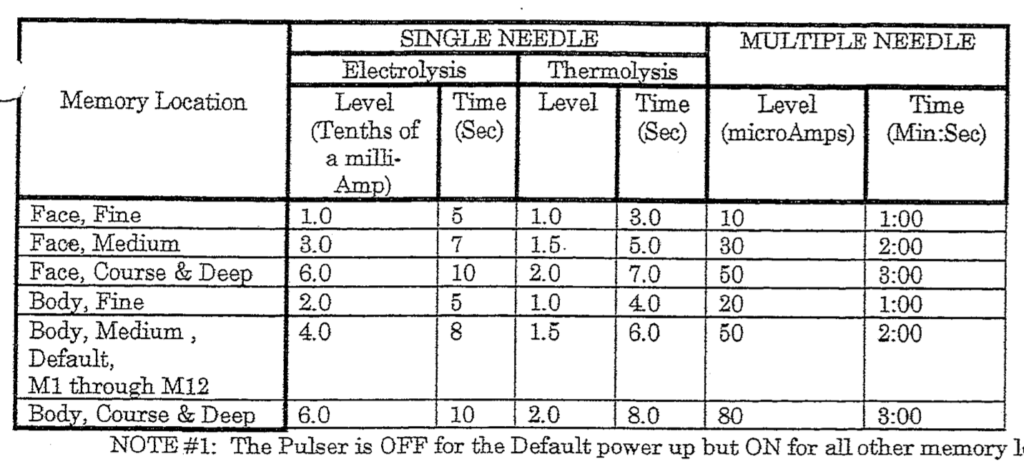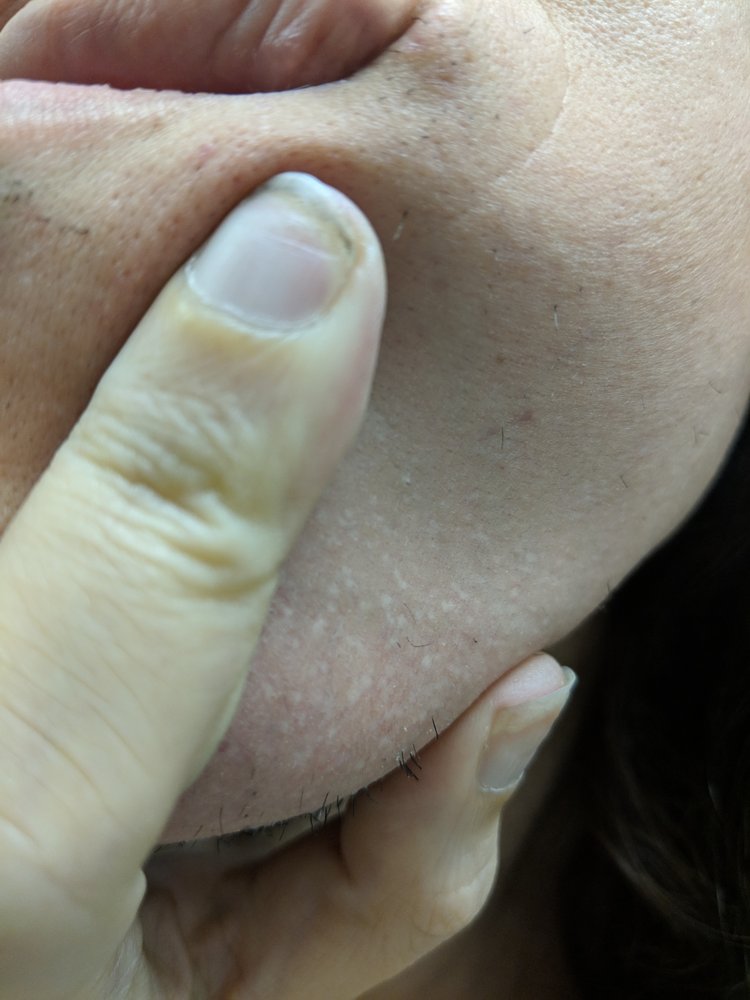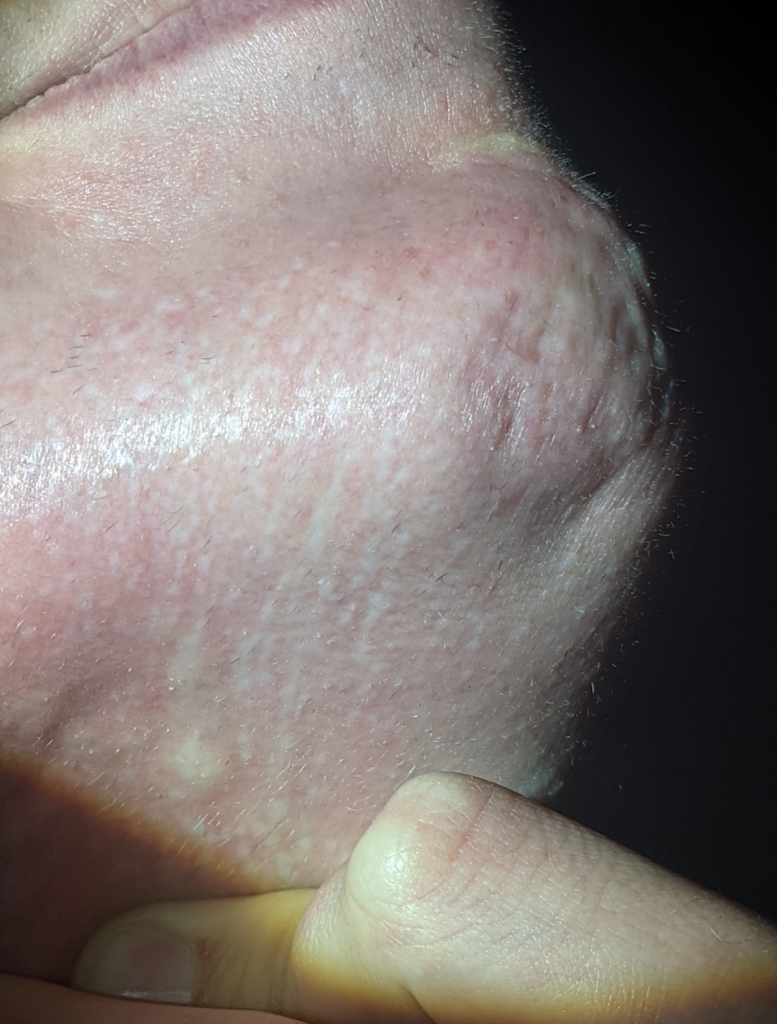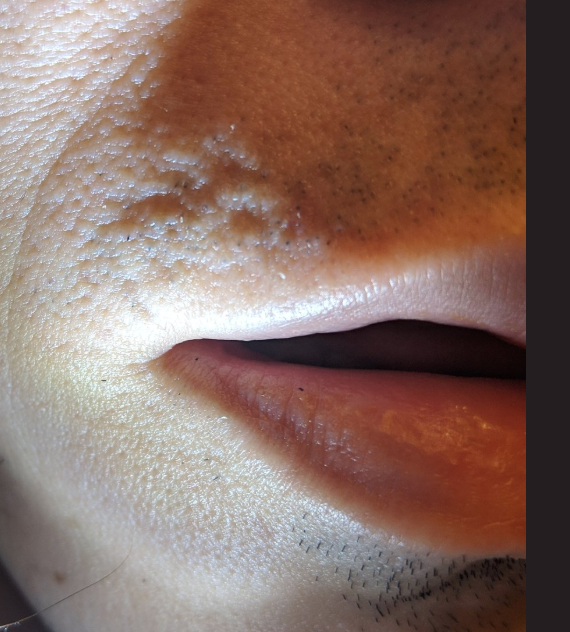Multi-needle galvanic (MNG) electrolysis is a straightforward adaptation of traditional galvanic electrolysis that aims to speed up the treatment by using 16 or 32 needles instead of one. In theory, the concept sounds promising. However, while I’m sure that competent MNG operators exist, I have many criticisms of the method as I’ve seen it practiced today. I speak as someone who has undergone about 70 hours of MNG from an outspoken and self-proclaimed “expert”, and who now has significant scarring from the process as a result.
How can one insert 32 needles while maintaining accuracy?
It is much more difficult to achieve accurate insertions with MNG. Getting the 32nd needle in while not causing any of other 31 to slip out is a challenge! I’ve seen two solutions to this problem, and I don’t care for either. The first is to bend each needle and let them hang out of the follicles, as those they were hooked into the skin. The second is simply to drive the needles in as far as they’ll go, bypassing the bottom of the follicle. In either case, the needle is often misaligned, and as a result, the electrologist has to introduce much more lye than is necessary.
Recall from my galvanic page that a coarse beard hair takes about 80 to 90 units-of-lye to treat. Below are the factory presets for the Gentronics MC-160D, the most common multi-needle machine in use.1

These values agree with Hinkel’s – for coarse hair on the face, we have 0.05 mA for 180 sec, or 90 UL.

Asking electrologists in the wild for their common settings will yield significantly higher values. Here we have a conversation with one of the operators who scarred me. (The current is given in microamps.) For the regrowth, she was using 0.130 mA at 305 sec, or 396.5 UL. Under the chin, we have 0.145 mA at 285 sec, or 413.25 UL. I doubt these values make sense to her. Before I decided to become an electrologist, I recall asking what the numbers on the Gentronics display mean (the machine does the UL calculation for you), and she responded that her employer told her to ignore them.
Below is another conversation with another electrologist who operates three times as hot as the Gentronics preset.

I have many more of these, some from electrologists who are substantially overtreating simply because they can’t do the arithmetic correctly. Again, I emphasize that Hinkel’s numbers are guidelines. Having to run a little high at times is expected. However, the numbers I receive from working electrologists are typically three, four, even five times higher than I would anticipate.
How much faster is multi-needle electrolysis over traditional electrolysis?
Many MNG electrologists tout the method as being “32 times faster than traditional electrolysis”, solely due to using 32 needles. The highest rate of removal that I’ve witnessed is about 600 hairs per hour (the Gentronics has a hair counter), and that is with an operator using two machines on the cheek, a relatively flat and easy-to-treat area. On the neck or upper lip, this rate drops to between 100 and 200 hairs per hour. For comparison, it’s not uncommon for me to spend about 10 seconds actively treating a hair. Tack on a few more seconds for actual removal. I trust that you can do the math.
These comparative claims about speed are inaccurate for two reasons. First, the time spent inserting, removing, and racking needles is not insignificant. The MNG operators I’ve seen don’t cycle the needles, as one might expect. Rather, they put in 16 needles, wait for them to finish (in some cases while scrolling through Instagram), and then remove them. Second, MNG uses much lower currents. Using 16 needles but operating at 1⁄16th the current doesn’t provide any gains in speed.
As I’ve previously mentioned, I’ve undergone about 70 hours of MNG and still had plenty of hair remaining. If this process were truly 32 times faster, a single-needle job would take over 2,240 hours. Absolute nonsense!
What does multi-needle scarring look like?
Galvanic scarring generally looks like a whitening of the skin. This is not a true hypopigmentation due to melanocyte inhibition (the marks aren’t visible under a Wood’s lamp), but rather the actual formation of scar tissue. The whiteness is due to changes in vascularity and as well as the different optical properties of scar collagen architecture. The following image of my chin, after about six months of MNG, is fairly typical.

These sort of marks are extremely common in Los Angeles. About half of my new clients here find me after having received similar work elsewhere.

Pitting from MNG is not as common, but can happen in areas of the face that see a lot of movement and which are generally regarded as easy to scar: the upper lip and the corner of the mouth. Directional lighting, similar to how cosmetic dermatologists highlight scars, can be useful in seeing these. Here again is my face, about six months into electrolysis (and about four months after my last upper-lip treatment).


1Jenson, J. (1998). The Gentronics Digital Combo Epilator: Permanent Hair Removal Using Blend, Thermolysis, Flash and Multiple Needle. Los Angeles, Calif.: Gentronics.